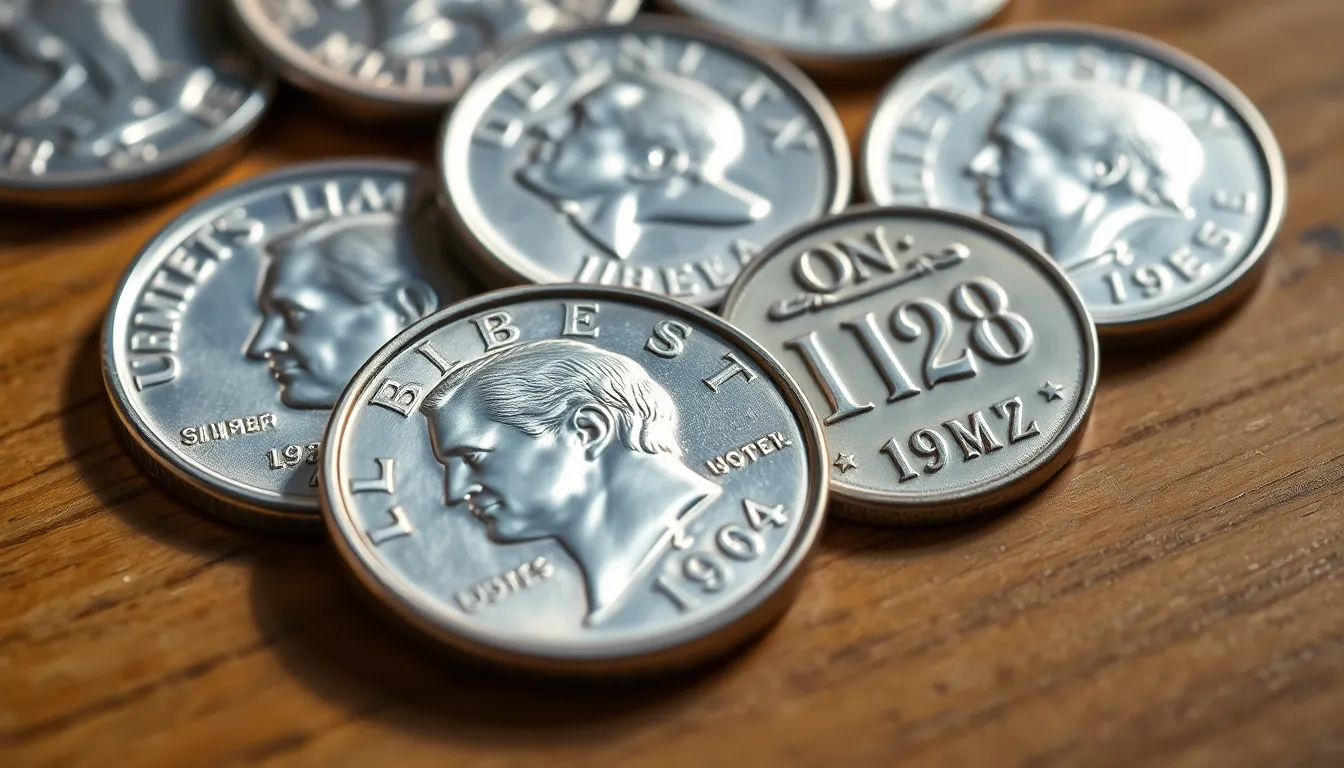Dimes might seem like pocket change, but some modern dimes could actually be worth more than a cup of overpriced coffee. Yes, that little coin you find wedged between your couch cushions could be hiding a treasure! While most dimes are worth just ten cents, a select few have collectors buzzing and wallets opening wide.
Table of Contents
ToggleUnderstanding Modern Dimes
Modern dimes, produced by the United States Mint since 1965, typically appear as basic ten-cent coins. Despite their commonplace nature, certain varieties hold significant value for collectors and investors alike.
What Are Modern Dimes?
Modern dimes include those minted since 1965, including the Roosevelt Dime and the special Bicentennial coin. These coins primarily contain copper and nickel. In comparison to older dimes, they lack silver content, which impacts rarity. However, certain mint errors or unique features can enhance their value. Collectors often seek out coins produced in low quantities or those with notable inconsistencies during minting.
Key Features to Identify Valuable Dimes
Examining specific characteristics helps identify valuable dimes. Look for mint marks on the reverse side, as they indicate the mint location. Check for errors, such as double strikes or off-center impressions; these maximize worth. Inspecting the coin’s condition significantly influences value, with uncirculated coins fetching higher prices. Rarity also plays a crucial role; dimes issued in limited runs often attract collectors.
Types of Modern Dimes Worth Money

Certain types of modern dimes hold value beyond their face value. Familiarity with these dimes aids in recognizing potential treasures.
Silver Dimes
Silver dimes primarily include coins minted before 1965. These dimes contain 90% silver and are highly sought after by collectors. Dimes dated 1964 and earlier consistently showcase a higher market price. Coins from the 1946 to 1964 period, despite their modern appearance, still possess that silver content. Collectors often look for these coins in uncirculated condition for maximum value. As of now, they trade for several dollars, depending on their condition and market demand.
Error Dimes
Error dimes arise from minting mistakes and can become quite valuable. Misprints, off-center strikes, or double dies significantly enhance a dime’s value. Collectors seek these unique coins for their rarity and potential investment return. For instance, a 1982 Roosevelt Dime with a double die error commanded a price well over one hundred dollars. Inspecting coins for these errors adds excitement and value to any collection. Proper identification of these coins is essential for any serious collector or investor.
Factors That Determine Value
Several elements contribute to the value of modern dimes. Collectors and investors prioritize these key factors to accurately assess a dime’s worth.
Condition and Grading
Condition significantly impacts a dime’s value. Coins in uncirculated condition often command higher prices compared to those that show signs of wear. Grading systems, such as the Sheldon Scale, help categorize coins based on their physical state. A dime rated as “Mint State” reflects no visible flaws, resulting in increased desirability among collectors. Conversely, lower grades result in diminished value. It’s important to understand that even minor imperfections can drastically alter a dime’s market appeal. Each grade level offers different opportunities for collectors to identify valuable coins.
Rarity and Demand
Rarity plays a crucial role in determining value. Limited mintage can create scarcity, heightening a dime’s allure for collectors. Specific years or varieties may attract significant interest due to their historical relevance or unique characteristics. Demand also fluctuates based on market trends and collector interest. Dimes featuring errors or unique designs often fetch higher prices in auctions. Economic conditions can influence demand for collectible dimes, impacting their market value over time. Engaging with collectors’ communities can provide insights into current trends and valuable varieties.
How to Buy and Sell Modern Dimes
Buying and selling modern dimes involves understanding the market and knowing where to find quality coins. Various options exist for both purchasing and selling dimes.
Where to Buy
Local coin shops often serve as reliable sources for modern dimes. Online marketplaces provide access to a larger inventory, allowing buyers to compare prices effectively. Auction websites feature diverse selections, with some dimes listed at competitive prices. Additionally, collector shows allow face-to-face interactions that can lead to unique finds. Social media groups dedicated to coin collecting connect enthusiasts and facilitate buying opportunities. Each of these venues offers distinct advantages, providing avenues for acquiring valuable dimes.
Selling Tips for Collectors
Collectors looking to sell modern dimes should first evaluate their coins’ condition. It’s crucial to obtain a grading from reputable sources to reflect the coin’s value accurately. Using online platforms can expand the reach to potential buyers, increasing the chances of successful sales. Providing clear images and comprehensive descriptions can attract more interest. Setting competitive prices based on research helps ensure a fair transaction. Engaging with local collector communities can lead to quick sales and valuable insights into current trends.
Modern dimes can be more than just loose change. With the right knowledge and a keen eye for detail collectors can uncover hidden treasures among these seemingly ordinary coins. Identifying key features like mint marks and errors can significantly enhance their value.
As the market for coins evolves staying informed about trends and engaging with collector communities can provide valuable insights. Whether buying or selling modern dimes understanding their worth and the factors that influence it is essential for maximizing potential gains. Ultimately each dime holds a story and a potential value waiting to be discovered.




